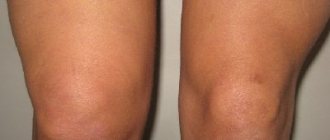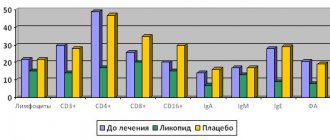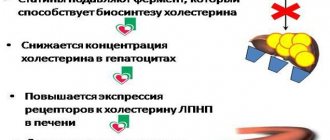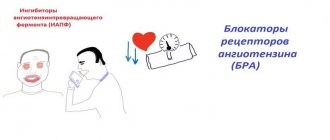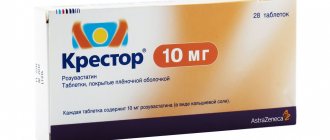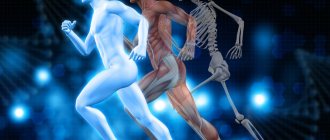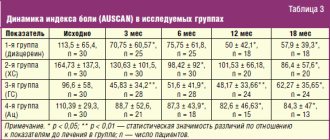Osteoarthrosis (deforming arthrosis) is a chronic degenerative disease of the joints. This disease is characterized by damage to articular cartilage and tissues surrounding the joints. As a rule, the inflammatory process in the joints is not pronounced. The main mechanism for the development of the disease is considered to be a disorder in the cartilage tissue (excessive wear) due to various reasons.
This can be either natural aging of the body, or the development of similar changes in joints at a younger age (premature aging) due to malnutrition of cartilage tissue, which leads to faster wear of cartilage tissue. With the development of osteoarthritis, salts accumulate in the tissues surrounding the joint, joint deformation and inflammation of the joint capsule (synovitis). About 10-12% of the population suffers from osteoarthritis, most often these are women over 40-45 years old, and in the older age group (over 60-65 years old) almost 100% suffer from osteoarthritis.
Most often, large joints are affected, such as the hip joint, knee, ankle joint, and somewhat less frequently, the shoulder and elbow joints. Small joints can also be involved in the process (joints of the hands). Osteoarthritis (OA), as a rule, is often combined with other degenerative diseases of the musculoskeletal system such as osteochondrosis and spondylosis deformans. The etiology of osteoarthritis is not fully understood, but factors that contribute to the development of osteoarthritis can be divided into hereditary and acquired.
There are also primary and secondary deforming osteoarthritis. The causes of primary osteoarthritis include:
Excessive or repeated loads that significantly exceed the physical capabilities of the cartilage tissue of the joints. This can be either sports or associated with heavy physical work.
Congenital abnormalities of the geometric shape of the joints, which leads to disruption of the biomechanics of the joint and a change in the correct distribution of load vectors on the articular cartilage. These may be congenital dysplasia of the joints, deforming diseases of the spine, abnormalities of skeletal development, underdevelopment and hypermobility of ligaments.
Changes in the structure of cartilage tissue of joints due to microtraumatization, microcirculation disorders, joint injuries (intra-articular fractures, dislocations, subluxations, hemarthrosis).
The following conditions are most often considered to be the causes of secondary osteoarthritis:
Inflammatory processes caused by infection or injury, congenital dysplasia of the hip and knee joints, developmental disorders of the joint, instability of the joint (including after injury), endocrine diseases (for example, diabetes mellitus), metabolic changes (gout, hemachromatosis), necrotic changes in bone tissue , intoxication with heavy metal salts, rheumatological diseases such as rheumatoid arthritis, SLE, blood diseases (hemophilia). There are three stages in the development of osteoarthritis:
- Stage 1 is characterized by the presence of minor morphological changes in the joint and is manifested by pain during physical activity (radiologically there will only be a narrowing of the joint space). Morphological changes in articular cartilage at stage 1 are manifested by the appearance of roughness and disintegration of the tissue structure.
- Stage 2 is characterized by constant pain in the joints; radiographically, the narrowing of the joint gap is more pronounced; osteophytes appear; morphologically, this stage is characterized by the appearance of tuberosity on the surface of the cartilage and the development of osteophytes.
- Stage 3 osteoarthritis is characterized not only by pain, but also by the appearance of joint dysfunction. Morphologically, stage 3 is manifested by thinning of the cartilage until it disappears, thickening of the intra-articular ligaments, and a sharp decrease in intra-articular fluid.
general information
Osteoarthritis begins with microdamage to cartilage against a background of increased load or reduced ability to regenerate. As a result, the tissue becomes thinner and becomes denser and less smooth. The movement of bones relative to each other becomes difficult, and certain areas of the articular surfaces begin to experience constant overload.
The process is accompanied by a change in the properties of the synovial fluid, which becomes thicker. Bone growths – osteophytes – appear inside the joint cavity. As the disease progresses, their number increases and the distance between the bones decreases. The pathological process spreads to surrounding tissues: ligaments, muscles. Ultimately, all elements of the joint grow together, and movement is completely blocked.
Make an appointment
Pathophysiology of OA
Vascularization of cartilage is a feature of the development of osteoarthritis. Blood vessels grow into the cartilaginous continuation of the articular surface, and ossification of the articular capsule begins from the subchondral zone
Primary and secondary OA have a common pathological basis. OA was previously thought to be a degenerative disorder resulting from the biochemical breakdown of hyaline cartilage in synovial joints. However, today a slightly different point of view is accepted, which suggests that not only the articular cartilage suffers, but also the entire joint, including the subchondral bone, synovial membrane and nearby tissues.
Despite the degenerative nature of OA, there is increasing evidence that after the synthesis of cytokines by chondrocytes and the release of cytokines into the joint cavity, an inflammatory process develops. Proinflammatory mediators (cytokines interleukin-1 and tumor necrosis factor) are not involved in matrix degradation [2], but activate chondrocytes in the superficial layer of cartilage, which increases the synthesis of matrix metalloproteinases and, consequently, degeneration of articular cartilage.
In the initial stage of OA, due to increased synthesis of proteoglycans, the main component of the matrix, swelling of the cartilage occurs. This stage can last several years or even decades, and its main manifestation is hypertrophy of the articular cartilage.
Further, as OA progresses, the level of proteoglycans decreases to extremely low values, and their qualitative composition changes. Damaged cartilage is subject to overload, as a result of which the synthesis of metalloproteinases (collagenase, stromelysin and others) increases. They contribute to the further destruction of proteoglycans and the entire collagen network, which determines the progressive degeneration of cartilage. As a result, the cartilage softens and loses its elasticity and becomes increasingly damaged. Microscopically, peeling and vertical clefts are noticeable on the smooth surface of the articular cartilage at this stage of the disease.
OA is characterized by vascularization of cartilage and changes in the subchondral bone. An actively mineralizing osteoid is formed in it, and then subchondral cysts and microfractures form. This leads to the development of subchondral sclerosis.
Kinds
Most often, the disease is classified depending on the location of the pathological process. Osteoarthritis can be unilateral or bilateral and deform almost any joint:
- knee;
- hip;
- ankle;
- brachial;
- temporomandibular;
- elbow;
- small joints of the foot and hand;
- intervertebral joints.
Depending on the cause, osteoarthritis can be primary (occurs on its own) or secondary (develops against the background of another pathology or injury).
What is the prognosis for osteoarthritis of the joints?
It is literally impossible to make unambiguous predictions in the situation under consideration.
The chances of recovery and the success of the upcoming treatment are largely determined by the timeliness of seeking professional help.
It can be noted that, considering the issue of predicting the situation from the point of eliminating morphological changes, the conclusions are not comforting, which is due to the impossibility of complete restoration of the affected tissues.
The presence of pathology in old age indicates the complexity of the course of the disease, relative to the clinical picture of younger patients.
To summarize, we can come to the conclusion that, regardless of the situation, the most positive prognosis (elimination of complaints and full/partial restoration of motor function) is possible only if you contact your doctor in a timely manner, as well as if all recommendations and prescriptions are followed.
Causes
The development of osteoarthritis can be triggered by any disease or condition that increases the load on the joint or worsens its regeneration processes. Most often, pathology occurs against the background of:
- joint injury or surgery;
- past inflammatory process;
- excess body weight;
- regular excessive physical activity (standing work, professional sports, heavy lifting);
- hormonal shocks (pregnancy, menopause);
- congenital pathologies of the musculoskeletal system (flat feet, congenital hip dislocation, etc.);
- autoimmune diseases (systemic lupus erythematosus, rheumatoid arthritis);
- connective tissue dysplasia (a condition in which its structure changes);
- endocrine diseases and metabolic disorders (diabetes mellitus, gout);
- vascular diseases (atherosclerosis, thrombophlebitis, etc.).
Heredity, as well as age over 45 years, significantly increases the risk of developing osteoarthritis.
Pharmacotherapy of OA, recommendations of the International Society for the Study of OA (OARSI), 2014
The following drugs are used to treat osteoarthritis:
Paracetamol
Inflammatory mediators can stimulate angiogenesis. Thus, hypoxia, which often occurs during the inflammatory process, stimulates the synthesis of vascular endothelial growth factor (VEGF). Vascular growth can also be stimulated by fibrinogen and inflammatory cells: macrophages, lymphocytes, mast cells and fibroblasts.
A 2010 meta-analysis confirmed the effectiveness of paracetamol as a moderate pain reliever for OA [8]. However, studies have shown an increased risk of side effects associated with paracetamol use, including gastrointestinal (GI) manifestations and multiorgan disorders [8]. In connection with these data, OARSI recommends using the drug strictly in accordance with the dosage and duration of the course.
Capsaicin
A 2011 comparative, double-blind, randomized study of 100 patients with knee OA found that the topical analgesic capsaicin was 50% more effective as an analgesic for osteoarthritis than placebo [9].
Corticosteroids (intra-articular injections)
Recent studies demonstrate a clinically significant short-term analgesic effect [10]. There are several other recommended medications for the treatment of osteoarthritis.
Chondroitin
Four studies examining the use of chondroitin in OA showed mixed results. Some trials showed some analgesic effects, while others showed chondroitin's effect was no different from placebo [11]. In addition, specialists from the International Society for the Study of OA - OARSI note a high degree of heterogeneity of studies and their low quality, and therefore a final assessment of the effectiveness of chondroitin is extremely difficult. Thus, the effect of chondroitin as a symptomatic remedy is considered questionable, and it is not recommended as a drug for the treatment of OA.
Diacerein
A 2010 meta-analysis examining data from six studies involving 1533 patients found a relatively modest but statistically significant analgesic effect of the non-narcotic analgesic diacerein compared with placebo [12]. The meta-analysis also noted a significant increase in the risk of diarrhea among volunteers taking diacerein. However, diacerein is considered safer than NSAIDs.
Duloxetine
Studies have proven that the inhibitor of neuronal reuptake of serotonin and norepinephrine, the third generation antidepressant duloxetine, is more effective than placebo in relieving pain in OA [13]. However, 16.3% of patients receiving duloxetine experienced side effects (compared to 5.6% in the placebo group). These include nausea, dry mouth, drowsiness, fatigue, decreased appetite, and hyperhidrosis. In this regard, the need for the use of duloxetine for the treatment of OA in persons with concomitant diseases (diabetes mellitus, arterial hypertension and other cardiovascular diseases, renal failure, gastrointestinal bleeding, depression, limitation of physical activity, including due to obesity) is recognized doubtful*.
Glucosamine
A meta-analysis of three randomized controlled trials found a beneficial effect of rosehip powder (5 g/day) as an analgesic for OA compared with placebo, but these data require further study.
Two large studies evaluating the effectiveness of glucosamine in the treatment of OA yielded conflicting results [6]. One study showed a statistically significant analgesic effect, while another showed no effect. The latest meta-analysis, which included a large-scale study, did not prove the effectiveness of glucosamine at all. Based on these data, OARSI experts came to the conclusion that the effectiveness of glucosamine as a symptomatic agent for OA is questionable. It is not recommended as a treatment for OA [6].
Hyaluronic acid (intra-articular injections)
The results of clinical trials (CTs) examining the effectiveness of intra-articular injection of hyaluronic acid (HA) have been controversial [6]. Conflicting data from meta-analyses and individual studies cast doubt on the advisability of using hyaluronic acid preparations for OA of the knee and hip joints. For OA of several joints, GC is not recommended.
Oral NSAIDs
Taking these drugs is included in recommendations for the treatment of osteoarthritis for patients without concomitant diseases. For concomitant gastrointestinal diseases, it is necessary to prescribe proton pump inhibitors along with NSAIDs. For patients at high risk (GI bleeding, myocardial infarction, history of chronic renal failure), oral NSAIDs are strictly not recommended.
Risedronic acid
A review of the literature conducted by Japanese scientists in 2010 suggests that high doses of risedronic acid do not reduce the severity of OA symptoms, but may help reduce the progression of OA by maintaining the structural integrity of the subchondral bone [14]. Laboratoryly, this effect is manifested by a decrease in the level of the cartilage degradation marker CTX-II. Thus, the effectiveness of residronic acid requires further study.
Opioids
Studies have shown moderate effectiveness of codeine and morphine for OA of the knee and hip. A 2006 Cochrane meta-analysis of placebo-controlled trials involving 1019 patients found statistically significant benefits for tramadol compared with placebo [15].
List of sources
- Folomeeva O. M., Erdes Sh. F. Prevalence and social significance of rheumatic diseases in the Russian Federation // Doctor (rheumatology). 2007. No. 10. P. 3–12.
- Poole AR. An introduction to the pathophysiology of osteoarthritis. Front Biosci. 1999 Oct 15. 4: D662–70.
- van Baarsen LG et al. Heterogeneous expression pattern of interleukin 17A (IL-17A), IL-17F and their receptors in synovium of rheumatoid arthritis, psoriatic arthritis and osteoarthritis… Arthritis Res Ther. 2014. 16 (4):426.
- Brandt KD. A pessimistic view of serologic markers for diagnosis and management of osteoarthritis. Biochemical, immunologic and clinicopathologic barriers. J Rheumatol Suppl. 1989 Aug. 18:39–42.
- Recht MP et al. Abnormalities of articular cartilage in the knee: analysis of available MR techniques. Radiology. 1993 May. 187(2):473–8.
- Zhang W et al. OARSI recommendations for the management of hip and knee osteoarthritis, part I: critical appraisal of existing treatment guidelines and systematic review of current research evidence. Osteoarthritis Cartilage. 2007 Sep. 15(9):981–1000.
- Felson DT et al. Weight loss reduces the risk for symptomatic knee osteoarthritis in women. The Framingham Study. Ann Intern Med. 1992 Apr 1. 116 (7):535–9.
- Bannuru RRDU, McAlindon TE. Reassessing the role of acetaminophen in osteoarthritis: systematic review and meta-analysis. Osteoarthritis Research Society International World Congress; 2010 Sep 23–26; Brussels, Belgium. Osteoarthritis Cartilage 2010; 18 (Suppl 2):P 250.
- Kosuwon W et al. Efficacy of symptomatic control of knee osteoarthritis with 0.0125% of capsaicin versus placebo. J Med Assoc Thai¼Chotmaihet Thangphaet 2010; 93(10):118e95. Epub 2010/10/27.
- Bannuru RR et al. Therapeutic trajectory of hyaluronic acid versus corticosteroids in the treatment of knee osteoarthritis: a systematic review and meta-analysis. Arthritis Rheum 2009; 61 (12):1704–11.
- McAlindon TE et al. OARSI guidelines for the non-surgical management of knee osteoarthritis //Osteoarthritis and Cartilage. - 2014. - T. 22. - No. 3. - pp. 363–388.
- Bartels EM et al. Symptomatic efficacy and safety of diacerein in the treatment of osteoarthritis: a meta-analysis of randomized placebo-controlled trials. Osteoarthritis and Cartilage/OARS. Osteoarthritis Research Society 2010; 18(3):289–96.
- Citrome L, Weiss-Citrome A. A systematic review of duloxetine for osteoarthritic pain: what is the number needed to treat, number needed to harm, and likelihood to be helped or harmed? Postgrad Med 2012; 124(1):83.
- Iwamoto J. et al. Effects of risedronate on osteoarthritis of the knee //Yonsei medical journal. 2010. No. 2. 164–170 pp.
- Cepeda MS, Camargo F, Zea C, Valencia L. Tramadol for osteoarthritis. Cochrane Database Syst Rev 2006; (3):CD005 522. Epub 2006/07/21.
Degrees
Orthopedists distinguish 4 degrees of the disease:
- Grade 1: there are no symptoms, but with exertion a person may notice slight pain or discomfort; all cartilage damage occurs at the microscopic level;
- 2nd degree: pain occurs not only during exercise, but also at rest; x-rays reveal a narrowing of the joint space and isolated bone growths;
- 3rd degree: destruction reaches its peak, surrounding tissues are involved in the pathological process; the pain becomes constant, and the pictures clearly show deformation, narrowing of the joint space and numerous osteophytes; Often at this stage, dislocations and subluxations of the joint occur due to weakening of the ligaments;
- 4th degree: bone growths completely block the joint, movement is impossible.
What are the key symptoms of joint osteoarthritis?
Osteoarthritis is one of the special pathological conditions that have a fairly low rate of development, which indicates difficulties in diagnosis at the initial stages. For this reason, it can be seen that the symptomatic picture becomes more pronounced over time, but at the same time carries serious consequences.
Among the main symptoms of the pathological condition are:
- the appearance of painful discomfort/severe dull aching pain in the upper/lower extremities or lumbar/sacral spine;
- accompaniment of movements with a characteristic crunch;
- limitation of mobility of varying degrees, reduction in the amplitude of available movements;
- stiffness in the morning after waking up;
- barely noticeable visually, but quite noticeable inflammatory processes localized in the upper/lower extremities or various parts of the spinal column;
- aching pain that occurs mainly at night or at rest;
- inability to perform basic physical exercises;
- local swelling, swelling of tissues at the location of the disease;
- formation of osteophytes (bone growths).
It is important to note that the earlier symptoms are identified, the greater the chances of successful completion of complex and relatively quick treatment.
Symptoms
The main signs of osteoarthritis develop gradually, intensifying as the disease progresses. Most patients note:
- pain: associated with friction of the articular surfaces of bones from each other, intensity and duration depend on the stage;
- crunching when moving: is one of the first signs of the disease, as it progresses it is accompanied by pain;
- stiffness: as the cartilage is destroyed and osteophytes appear, the range of motion of the joint is reduced until complete blocking (ankylosis);
- joint deformation due to bone growths;
- changes in surrounding tissues: especially noticeable when affecting the limbs and fingers, which appear noticeably curved.
Damage to large joints significantly changes a person’s lifestyle, as he loses the ability to move independently and take care of himself.
Arthrosis of the interphalangeal joints of the hands
This form most often occurs in women after menopause. A clear sign of osteoarthritis are small lumps - nodules that can be felt on the fingers. Patients feel burning and tingling in their fingers. The functionality of the phalanges of the fingers is reduced. When diagnosing, it is important not to confuse it with rheumatoid arthritis. It also often affects the fingers, but with osteoarthritis these are the “end” joints, located closer to the tips of the fingers, and with rheumatoid arthritis, these are the “inner” joints, located at the base of the finger.
Diagnostics
If you have problems with your joints, you should seek help from an orthopedist-traumatologist. Its tasks include identifying the symptoms of osteoarthritis, determining the extent of the disease and selecting treatment.
Radiography remains the main way to visualize changes occurring inside the joint. The image allows you to see the size of the joint space, the number and size of osteophytes, and bone deformation. If it is necessary to visualize soft tissues, ultrasound or MRI is performed. According to indications, arthroscopy is performed: a puncture of the joint capsule, followed by the introduction of a miniature camera into the cavity, allowing one to see the joint from the inside. This technique can be supplemented by the administration of drugs.
Laboratory diagnostics are of an auxiliary nature. A general blood test can show an active inflammatory process if arthritis has joined osteoarthritis. If the disease is secondary in nature, tests, examinations and consultations with specialists are prescribed to diagnose the original pathology.
What is the diagnosis of joint osteoarthritis and which doctor is best to consult?
A rheumatologist diagnoses and treats diseases of the musculoskeletal system. To seek advice and receive a referral for treatment, you must first of all see a therapist who will conduct an examination, collect anamnesis and make the best decision on further actions.
Before starting treatment, each patient who seeks professional medical help with characteristic symptoms is sent for a comprehensive diagnostic examination, which involves the following stages:
- passing laboratory tests - conducting a general biochemical analysis allows you to get a fairly detailed picture of the existing disease and makes it possible to assess the level of substances contained, as well as the beginning of the development of pathological processes;
- X-ray examination - X-ray examination allows you to obtain images that clearly display the structure of the tissues and clearly visible damage to the bone or other elements of the joint, and bone formations (if any) are easily determined;
- arthroscopy is a minimally invasive diagnostic operation involving endoscopic examination of synovial fluid, the results of which provide the specialist with the opportunity to accurately assess the presence of any pathology, infection or inflammatory process.
Regardless of how intense the manifestation of the symptoms of a degenerative-dystrophic disease, in order to eliminate the possibility of making a false diagnosis, as well as to clarify the existing stage of development of pathological processes, each patient is required to undergo laboratory and x-ray examination.
Treatment of osteoarthritis
Treating osteoarthritis of the joints takes time and patience. At an early stage, doctors successfully stop the pathological process with the help of medications and physiotherapy, but in advanced cases the disease can only be dealt with surgically. All treatment methods are divided into:
- medicinal;
- non-medicinal;
- surgical.
Drug treatment is aimed at reducing pain and restoring cartilage tissue. Pain due to osteoarthritis significantly reduces the patient’s quality of life, making it difficult to move freely, which is why analgesics and anti-inflammatory drugs are at the top of the list of prescriptions. Depending on the clinical situation, drugs from the following groups are prescribed:
- NSAIDs (non-steroidal anti-inflammatory drugs): stop inflammation and reduce pain;
- corticosteroids: hormonal drugs that block inflammation;
- antispasmodics: relieve reflex muscle spasms.
Preparations of these groups are available in the form of ointments for topical use, tablets and capsules, suppositories or solutions for injections. Some are injected directly into the joint cavity, acting as efficiently as possible. The dose, duration and frequency of administration are selected only by a doctor, since long-term use can accelerate the destruction of joints.
The second group of drugs is aimed at restoring or slowing down the destruction of cartilage. The debate about the effectiveness of chondroprotectors is still not over, but at the moment their use is mandatory. Preparations based on chondroitin, glucosamine or their combination are used in long courses of 3-6 months.
In addition to basic therapy, the doctor may prescribe drugs to improve blood circulation and anti-enzyme drugs. Warming ointments have a good effect.
Non-drug treatment methods help enhance the effect of drugs. They are aimed at improving microcirculation in the affected area, stimulating muscles and reducing stress on the joint. For this purpose the following are used:
- massage;
- physical therapy and mechanotherapy;
- joint traction;
- physiotherapy: shock wave therapy, electrophoresis, ultraphonophoresis, ozone therapy, various applications, etc.
The help of surgeons is necessary in the final stages of the disease, when drugs can no longer stop or slow down the pathological process. The most effective method at the moment is endoprosthetics. The affected joint is removed and replaced with a modern prosthesis that can function for decades. This technique is especially often used to restore knee and hip joints.
In some cases, operations are performed to alleviate the patient's condition:
- corrective osteotomy: excision of part of the bone tissue followed by fixation of the remains at a different angle; allows you to reduce the load on the sore joint;
- arthrodesis: fastening bones together; this completely blocks movement in the joint, but the patient is able to lean on the leg without pain.
Make an appointment
Concept and classification of osteoarthritis
Osteoarthritis predominantly affects weight-bearing joints: knees, hips, shoulders and lumbosacral joints.
A 2011 comparative study found that the topical analgesic capsaicin was 50% more effective as a pain reliever for OA than placebo. An inhibitor of neuronal reuptake of serotonin and norepinephrine, a third-generation antidepressant, duloxetine is more effective than placebo in relieving pain in OA. OA is a heterogeneous group of conditions with different etiologies and similar biological, morphological and clinical manifestations. OA primarily affects weight-bearing joints: knees, hips, shoulders, and lumbosacral joints. The distal and proximal interphalangeal joints and metacarpal joints may be affected, but such localization is much less common. Daily loads, which are mostly placed on weight-bearing joints, play an important role in the development of the disease.
Primary, or idiopathic, is osteoarthritis, the cause of which remains unknown. It can be local (one or two joints are affected) or generalized (three or more joints are affected). Local OA is most often associated with damage to the knee joints (gonarthrosis) and hip joints (coxarthrosis). In secondary OA, there is an obvious cause of the disease: trauma, metabolic disorders, a history of other rheumatological diseases, and so on.
Prevention
Like most diseases, osteoarthritis is much easier to prevent than to cure. Simple rules will help maintain healthy joints and stop the process at an early stage if it has already occurred:
- sufficient physical activity: amateur sports are a good prevention of physical inactivity, help improve microcirculation and form a good muscle frame;
- normalization of body weight: excess weight creates increased stress on the joints, especially the knee, hip and ankle;
- minimizing traumatic factors: vibration, standing work, heavy lifting contribute to the development of joint diseases;
- correct posture and shoes to distribute the load on the joints;
- timely treatment of diseases that can cause secondary osteoarthritis.
What is the prevention of osteoarthritis of the joints?
The best way to treat pathologies of any type is, of course, their prevention. We share recommendations that will reduce the risk of developing such an unpleasant and difficult to treat disease.
Maintaining a healthy lifestyle and maintaining a level of regular physical activity
There is an opinion that physical activity contributes to the wear and tear of tissues, however, in practice, things are somewhat different. Indeed, excessive loads can have a detrimental effect on the condition of the joints, but measured ones will only be beneficial.
According to studies, activity of any type, aimed primarily at strengthening the muscular frame or improving coordination, primarily supports the motor function of the joints, enriching them with useful substances due to the activation of blood circulation.
It is known that people who prefer walking are less susceptible to the risk of developing osteoarthritis.
Monitoring optimal body weight and using adequate measures to reduce it (if necessary)
Excess body weight significantly increases the load on the body, which negatively affects the functionality of the joints. Over time, due to increased load, the lower limbs and spine of an obese person may be subject to degenerative-dystrophic pathologies. For this reason, regardless of the collected anamnesis, the severity of symptoms, and other factors, physical activity (visiting exercise therapy) is necessarily included in the treatment and rehabilitation protocol.
Work on the correction and elimination of congenital deforming conditions
By deforming conditions of the congenital type, it is customary to understand a large number of diseases, among which is flat feet.
The absence of proper measures to eradicate deformities of this type can lead to a confusion of the axis of the lower extremities, as well as improper distribution of the load on individual fragments of the joints.
Compliance with the principles of balanced nutrition
“You are what you eat” is a great saying that accurately conveys the importance and significance of a nutritious, balanced diet.
Refusal of a large number of useful microelements, diet, irregular nutrition, and other factors can become a point of development of pathological processes of the degenerative-dystrophic type.
Timely seeking qualified medical care
Since the times of the USSR, it was instituted to undergo medical examination, which made it possible to timely identify pathological conditions and begin their treatment. Today, this practice is more of a advisory nature, which inevitably leads to a deterioration in the health of patients.
Refusal to consult a doctor when the first signs of illness appear sometimes leads to irreversible consequences.
Preventive use of drugs from the chondroprotector group
Proper nutrition and an active lifestyle are certainly good. However, in a situation where the body is under increased stress or for some reason cannot absorb absorbed microelements, their preventive intake comes to the rescue.
An excellently proven drug is Artracam, which belongs to the category of chondroprotectors and is one of the most effective in its segment.
There are plenty of obstacles to a full, rich life. Only the person himself can ensure the desired level of quality of life, adhering to recommendations for the prevention of various types of diseases, as well as finding positive aspects in everything and enjoying every minute he lives.
Take care of your health from a young age!
Diet
Proper nutrition is not the main factor in the prevention of osteoarthritis, but it will also make its contribution to maintaining healthy joints. Recommended:
- a diet balanced in calories, macro- and micronutrients;
- sufficient amounts of vitamins and minerals;
- exclusion of spicy, canned, excessively fatty foods, alcohol, as well as products with artificial flavors and dyes;
- minimizing fast carbohydrates.
Collagen and omega-3 acids have a good effect on the condition of cartilage, which is why aspic and sea fish and olive oil should always be present in the diet.
Consequences and complications
Without timely treatment, osteoarthritis can cause disability, especially with bilateral damage.
It causes:
- severe joint deformation;
- bone curvature;
- loss of mobility;
- shortening of the limb (with coxarthrosis and gonarthrosis).
When the large joints of the legs are affected, a person’s gait and posture change so much that this inevitably leads to problems with the spine, pain in the neck and lower back.
Coxarthrosis (arthrosis of the hip joint)
Arthrosis of the hip joint is one of the most severe forms of arthrosis.
This type of osteoarthritis is the most difficult to treat. The disease manifests itself at retirement age, but in the presence of congenital anomalies, young people also become ill. Women tolerate this form of arthrosis worse, since the specific structure of the pelvic bones plays an important role in bearing and giving birth to a child.
The main symptom of coxarthrosis is severe pain in the pelvic area. It can cause lameness and changes in gait. Inflammations are outwardly invisible, but touching the sore spot is accompanied by painful sensations.
A serious side effect is spinal curvature. To reduce pain, a person begins to lean forward, which increases the load on the intervertebral joints. In addition, a change in gait.
Treatment at the Energy of Health clinic
If you begin to notice a suspicious crunch in your joints, you should not quickly search the Internet for how to treat osteoarthritis with folk remedies. It is better to seek help from professionals from the Energy of Health clinic. We use modern means of cartilage tissue restoration and offer each patient:
- individual selection of a drug regimen;
- constant monitoring and control of treatment effectiveness;
- various physiotherapeutic procedures;
- massage and physical therapy;
- puncture of the joints followed by the administration of painkillers or artificial synovial fluid;
- drug blockades for quick and effective pain relief.
Diagnosis and treatment of deforming arthrosis
Due to the fact that most patients do not attach due importance to the first pain symptoms in the joints, therapeutic treatment of osteoarthritis begins late and may be ineffective. The goal of conservative treatment of osteoarthritis is to restore blood circulation and nutrition in the tissues of the affected joint. The administration of anti-inflammatory drugs such as naproxen, voltaren, indomethacin, ortafen, brufen, etc. helps relieve inflammation. A course of treatment with drugs that improve metabolic processes in the joints (rumalon, arteparon) is also indicated. Physiotherapeutic treatment with ultrasound and pulsed currents, electrophoresis, paraffin baths, and therapeutic massage gives good results. Patients are shown mud baths and spa therapy. Patients are not recommended to overload the sore joint with physical movements. In case of stage 3 disease, surgical intervention is recommended to eliminate pain and restore the ability to support the limbs.
Advantages of the clinic
“Health Energy” is a multidisciplinary clinic with modern equipment and experienced staff. We are always aware of new developments in the field of treatment and prevention of diseases and offer our patients not only time-tested methods, but also modern, advanced methods.
Come to us if you need:
- fast and effective diagnostics;
- assistance from experienced doctors;
- an integrated approach to the treatment of diseases;
- comfortable conditions in the clinic;
- affordable prices for all medical services.
Osteoarthritis is a disease that begins gradually, develops slowly, but ultimately often leads to disability. Don’t let it change your life, sign up for a consultation with the orthopedists at Energy of Health.
